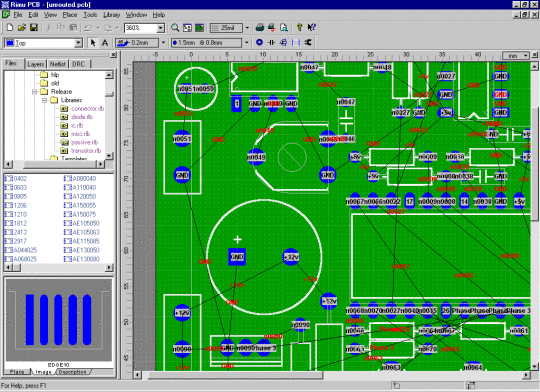Tango Pcb Layout Software
воскресенье 20 января admin 80
Creators of Tango PCB Design Software and ACCEL EDA ACCEL, originally founded in 1983, became a wholly owned subsidiary of Protel International Limited in. Meta medium lfc shrift for life.
Industry,,, Founded 1985 Founder Nick Martin Headquarters, United States, Australia (Registered office) Products, Vault,,, TASKING, Octopart, Ciiva, Revenue US$100 million (FY 2016) Website Altium Limited (formerly known as Protel until 2001) is an, -domiciled owned public software company that provides PC-based software for engineers who design. Founded as Protel Systems Pty Ltd in, in 1985, Altium now has regional headquarters in the United States, Australia, China, Europe, and Japan, with in all other major markets. Contents • • • • • • • • History [ ] Nicholas Martin, an electronics designer working at the in the 1980s, recognized that the tools then available limited the ability to design, either through a difficult manual process, or by requiring high-priced software that required expensive mainframe computers. With the development of the, Martin saw an opportunity to make the design of electronics product affordable, by marrying the techniques of to the. In 1985 he founded Protel Systems Pty Ltd, launching the company's first product later that same year — a -based (PCB) layout and design tool. Was marketed internationally by HST Technology Pty Ltd.
In October 1986 the San Diego-based ACCEL Technologies, Inc. Acquired marketing and support responsibilities of the PCB program for the US, Canada and Mexico under the name. In 1987, Protel launched the circuit diagram editor for DOS. This was followed by and in 1988. Protel's headquarters resided in Hobart, TAS, Australia until 1990 when Nick Martin decided to move the company to 's, which was proving to be a hot spot for technology companies. In 1994, he moved operations back to Sydney, followed by the successful IPO in August 1999. In 1991, Protel released / 1.0 for, the world's first Windows-based PCB design system.
The company continued to develop and release new versions of this design tool, including in 1998, in 1999 and in 2000. In August 1999, Altium was listed as a public company (ASX:ALU) to assist in funding of strategic technology development and acquisition. After a number of strategic technology and company acquisitions (see below), Protel Systems changed its name to Altium in 2001. Through various acquisitions Altium has maintained a significant presence in the United States, Europe and Asia. Was issued in 2003, Protel 2004 in 2004, 6.0 in 2005. In 2011, Altium announced it would be expanding its presence in Shanghai, China in the second half of 2011 to take advantage of lower wages.
The company will remain an Australian headquartered company and will continue to be listed on the Australian stock exchange, with a major administration presence in Sydney. Development continues to be a global effort, with product development staff in United States, Ukraine, Australia and the Netherlands. On October 15, 2012, the Altium board removed Nick Martin as CEO and named executive vice chairman Kayvan Oboudiyat to replace him. On October 23, 2012, Martin called for a general board meeting and disclosed he planned an attempt to oust four directors, including Oboudiyat.
